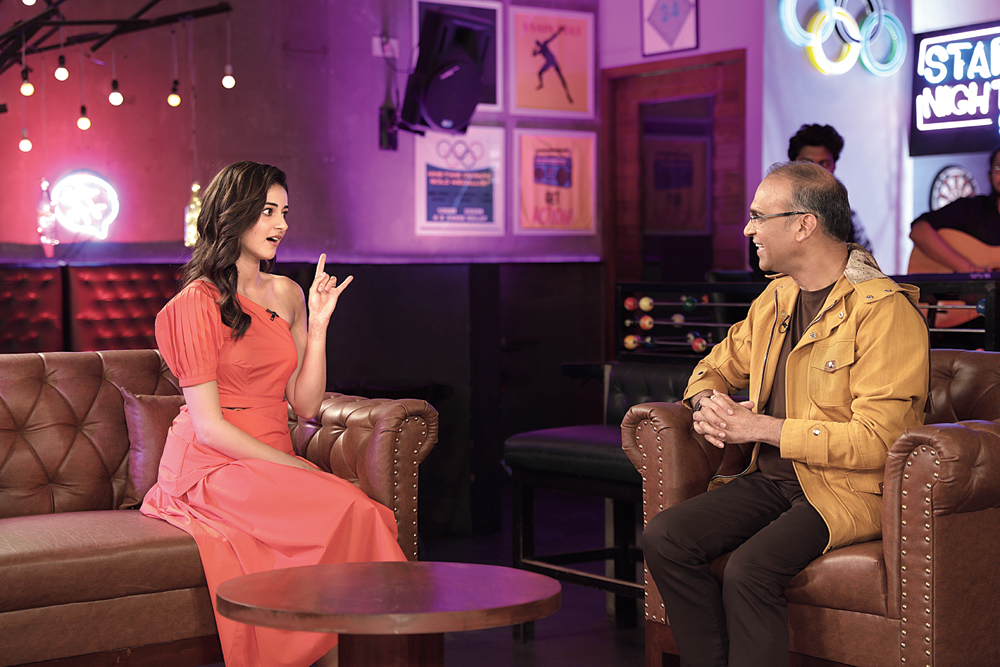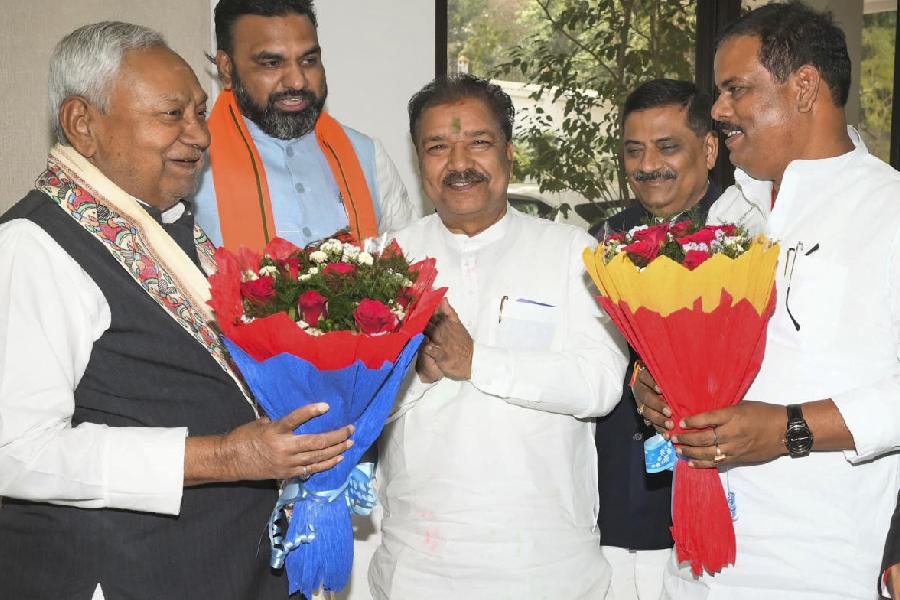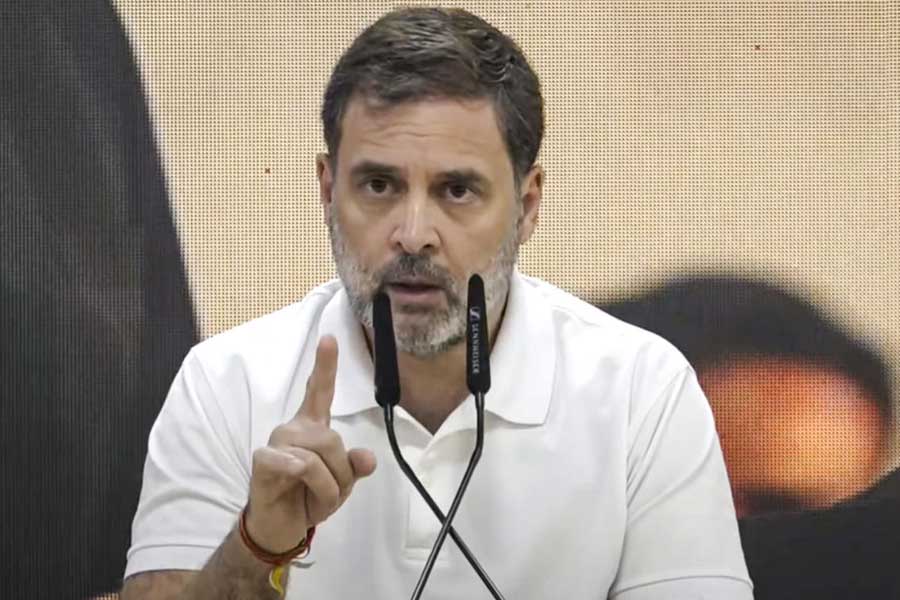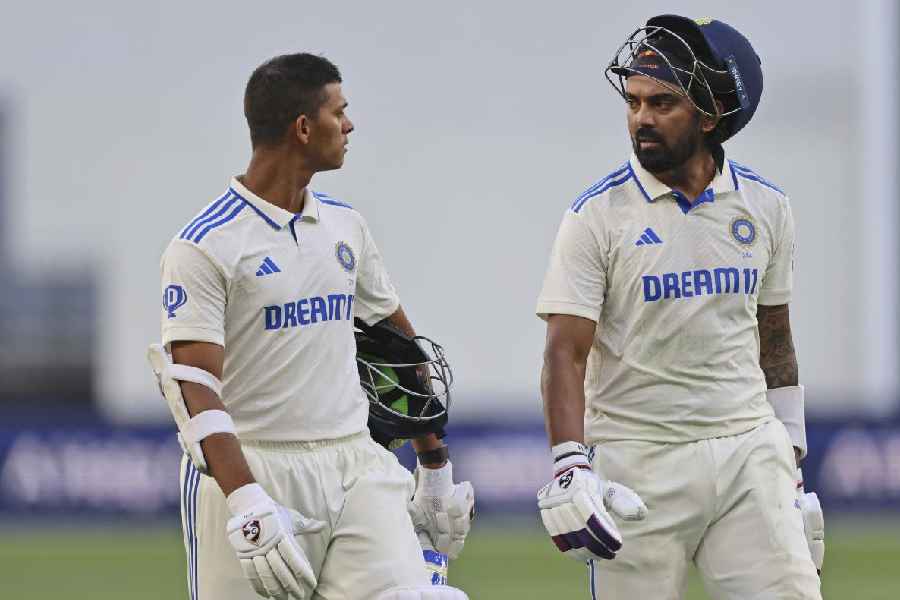Trade analyst Komal Nahta discusses evolution of film business with The Telegraph on the eve of the start of his celebrity chat show with Gen Y stars on Zee Cafe, which has started airing on Sundays at 10pm.
Who all will feature in this season of Starry Nights?
In the third season, we are focusing on the Gen Y stars — Vicky Kaushal, Fatima Sana Shaikh, Nora Fatehi, Kiara Advani… who have been around for not more than four or five years. We called them with their mentor or someone who has been instrumental in their career. For instance, we called Vicky Kaushal with Aditya Dhar, who has given him his biggest solo blockbuster in Uri. Fatima came with Nitesh Tiwari, who gave her Dangal, Sanya Malhotra with Amit Sharma who gave her Badhaai Ho, Kiara came with Ashvini Yardi who produced her first film F*ugly and who she calls her ‘momager’, Rakul Preet Singh came with Akki Wali, the director of De De Pyaar De, one of the big hits of her career. Siddhant Chaturvedi came with his father, who is his mentor, Alaya F, the actress of Jawaani Jaaneman, came with the producer of her film…
How many episodes will there be?
Thirteen. The first season of Starry Nights was big. It had 40 episodes. Starry Nights 2.0 had 13. So will Starry Nights Gen Y.
Talking of Gen Y, do you think Bollywood has the biggest supply line of upcoming talent now?
Yes. But the number of films being so huge, there is always a shortage. At any given period, Hindi films have had 12 or 13 heroes and an equal number of heroines who are saleable. In the ’80s and ’90s, they used to do 10 to 15 films at a time. Now the heroes have become so disciplined that they do one film at a time or at most three. Over the years, the number of films being made has been increasing.
How many films are made annually?
About 150 in Hindi, including the ‘B’ and ‘C’ category films. But of these, there are at least 50-60 films with respectable star cast, big production houses, known directors, etc. On an average then, each star should be doing five films but it doesn’t happen. So there is always a shortage.
Is public acceptability of new faces much quicker these days?
The audience’s attention span is reducing. They are constantly looking for new faces. So one success and you are suddenly the darling of the masses.
Is that posing a challenge for the established stars, like Shah Rukh Khan?
Shah Rukh’s problem is he is unable to decide what to sign. Otherwise all the super blockbusters are coming only from established stars — Aamir (Khan) has given Dangal, Ajay (Devgn) had Tanhaji, Akshay’s (Kumar) Mission Mangal, Good Newwz, Housefull 4, Salman’s (Khan) Tiger Zinda Hai or Bajrangi Bhaijaan.... Of the newcomers, nobody has really delivered, except an occasional Uri (starring Vicky Kaushal).
With satellite rights and digital rights, does any film lose money any more?
No, no, plenty of films flop. We generally discuss the star-cast films. But the general industry ratio is 20 per cent success while 80 per cent films lose money as flops or debacles. For the star-cast films, the success-failure ratio is probably 60:40. These 40 per cent could be flops, debacles or losing money. Love Aaj Kal was a big film, with Sara Ali Khan and Kartik Aryan and Imtiaz Ali, a top director. But it was a resounding flop, a debacle.
So they could not recover the money from these rights?
See, even the satellite rights are linked to box-office performance. Even if the rights are sold before the film’s release, the clauses specify the rates. For example, if the film does Rs 125 crore to Rs 150 crore of business, the rights would fetch this much, if it’s less than Rs 100 crore then this much.... While they may be earning by way of these rights, the cost of film-making has also gone up. Today the stars charge Rs 15-40 crore per film.
How much do the newcomers get?
Those who are in the industry for three to five years and are successful A-listers, easily get Rs 12-15 crore. For the absolute newcomers, it depends on the banner, the budget — Rs 25 lakh to a crore.
With the bigger stars going for profit-sharing, is it difficult to say who is the highest paid star today?
Yes, Aamir charges almost 75 per cent of the profit. He often does not take anything else. Others settle for 40-50 per cent. It’s all about negotiation. Even then, Aamir, Salman and Akshay would come in the top pay bracket. Shah Rukh has not signed anything in two years, so he is not in the frame.
With so many movie channels coming up, there must be a big fight for the satellite rights, right?
Which is why the satellite and digital rights are fetching such huge prices. It’s a golden period for the producers. If you make a star-cast film, you are assured of recovering ‘X’ amount. The channels are starved of content. The stars and technicians know that. A technician who got Rs 20 lakh charges Rs 1 crore now. Everyone has started demanding three to five times what they used to get five-six years back. Everyone thinks when the revenues are so huge why should one be deprived of the pie. That jacks up the production cost.
Is that counter-productive for stories which could do with smaller budgets?
Sometimes the story demands that budget, but sometimes the budget does not reflect in the film if you are expending it only on the cast and crew remunerations and not on the production. That becomes evident to the viewer. Then you are burdening the film with a cost that it will have to work harder to recover. Then it is definitely counter-productive.
With multiplexes coming in, has the box-office become more transparent now?
Even the single-screen theatres have computerised bookings now. Gone are the days in the ’80s when figures would be fudged. Things started improving in the ’90s. The level of honesty now is about 98-99 per cent.
Do you remember any film which majorly fudged figures?
Every producer used to do it. We bring out a trade magazine, called Film Information, which my father started in 1973. We had a tough time cross-checking the figures which the producers gave out. It was a given that those figures would be indicative and we would have to slog it out with our sources to reach the actual figures. Everyone knew the truth but the producers would try to hoodwink the world into believing something else.
Did you run into fights with the big names?
Oh, all the time! They used to challenge us, asking why we had printed a set of figures different from what they gave. We had a fight with Amitabh Bachchan for Hum.
It was such an ugly fight that every magazine reported it. We had said although the film will make money, some exhibitors who had booked the film at a high price will lose a part of their investment. He gave an interview against us. That was the only time Stardust did a Bollywood business story running to eight or 10 pages. We had tape-recorded an interview with an exhibitor. There was no Internet in those days. We asked people to come and listen to the tape in our office. We came out with more proof. The whole trade saluted us for our integrity.
Who inspired you to become a trade analyst?
It was my father Ramraj Nahta, who started the magazine in 1973. I passed out as a chartered accountant in 1984 and joined him.











